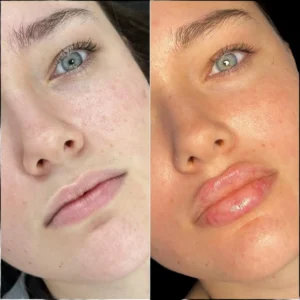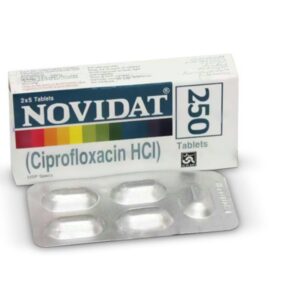A breast lift, also known as mastopexy, is a cosmetic procedure designed to restore a youthful breast contour by lifting sagging tissue and repositioning the nipple for a more natural, rejuvenated appearance. Many women choose this surgery to address the effects of pregnancy, breastfeeding, weight fluctuations, or aging.
While the results can be life-changing, it’s important to remember that surgery is only the first step. A smooth, comfortable recovery plays a huge role in achieving the best possible outcome. By following the right post-operative care plan, you can minimize discomfort, reduce complications, and enjoy your new look with confidence.
Below are essential tips to help you prepare for and navigate the recovery process after your breast lift.
1. Follow Your Surgeon’s Instructions Exactly
Your surgeon will provide you with a set of personalized post-operative guidelines that may include how to care for your incisions, when to change dressings, what medications to take, and when to return for follow-up appointments.
These instructions are based on your specific case, surgical technique, and overall health, so they’re more reliable than any generalized advice you may read online. If something is unclear, ask questions during your consultation or follow-up visit—don’t guess or improvise.
2. Prepare Your Home Before Surgery
The first few days after your breast lift are usually the most restrictive, so preparing your home in advance can make life much easier. Consider:
-
Setting up a recovery station near your bed or couch with water, snacks, tissues, phone charger, and medications within arm’s reach.
-
Placing frequently used items at chest level to avoid bending or stretching.
-
Arranging comfortable sleeping options—many patients find that sleeping in a reclined position helps reduce swelling and tension on the incisions.
3. Arrange for Help During the First Week
While you may be able to walk around on your own after surgery, simple activities like lifting groceries, cooking, or cleaning can strain your healing tissues. Enlist a trusted friend or family member to help for at least the first few days.
If you have children or pets, make sure someone else can handle their needs so you can focus on resting and healing without overexerting yourself.
4. Wear Your Surgical Bra or Compression Garment
Your surgeon will likely recommend wearing a specialized surgical bra or compression garment for several weeks after your procedure. This garment helps:
-
Reduce swelling
-
Support your new breast shape
-
Protect your incisions
-
Prevent unnecessary movement that could cause discomfort
Avoid underwire bras until your surgeon says it’s safe, as wires can irritate the incision sites.
5. Manage Swelling and Discomfort Proactively
Swelling, bruising, and mild soreness are completely normal in the early stages of recovery. To make the process more comfortable:
-
Take prescribed pain medication or over-the-counter alternatives as directed.
-
Use cold compresses (wrapped in cloth) for short periods to reduce swelling.
-
Keep your upper body slightly elevated when resting or sleeping.
Most swelling subsides within 2–3 weeks, but some residual swelling may last for a few months.
6. Avoid Heavy Lifting and Strenuous Exercise
For at least 4–6 weeks, avoid activities that involve lifting more than 10–15 pounds, high-impact exercise, or movements that engage your chest muscles heavily. This includes weightlifting, running, or vigorous yoga.
Instead, focus on gentle walking to maintain circulation and prevent stiffness. Your surgeon will let you know when it’s safe to return to your regular fitness routine.
7. Care for Your Incisions Properly
Your incisions need careful attention to avoid infection and promote clean healing. Follow these tips:
-
Keep the area clean and dry.
-
Change dressings as recommended by your surgeon.
-
Avoid soaking in bathtubs, pools, or hot tubs until you’re fully healed.
-
Once cleared, consider using silicone scar sheets or recommended ointments to minimize scarring.
8. Maintain a Healthy Diet and Stay Hydrated
Your body heals best when it has the right fuel. Incorporate:
-
Lean proteins for tissue repair (chicken, fish, tofu, beans)
-
Vitamin C-rich foods for collagen production (oranges, strawberries, bell peppers)
-
Zinc sources for immune support (pumpkin seeds, lentils, cashews)
-
Plenty of water to keep your body hydrated and flush out toxins
Avoid alcohol and smoking during recovery—they can slow healing and increase the risk of complications.
9. Be Patient and Realistic with Results
It’s common for breasts to appear swollen, firm, or asymmetrical during the first few weeks. Your final results may take 3–6 months to fully appear as the swelling subsides and the tissue settles into its new position.
Follow-up appointments are essential so your surgeon can track your progress and address any concerns early.
10. Protect Your Results for the Long Term
Once you’ve fully recovered, you can keep your breasts looking their best by:
-
Wearing supportive bras daily, especially during exercise.
-
Maintaining a stable weight.
-
Using sunscreen on your chest to prevent UV-related skin damage.
-
Staying active and eating well to support overall skin health.
Final Thoughts
A breast lift can be one of the most rewarding cosmetic procedures, restoring youthful contours and improving confidence. However, your long-term satisfaction depends largely on how well you take care of yourself during the recovery phase. By following these tips—along with your surgeon’s personalized advice—you’ll set yourself up for a smoother, more comfortable healing process and lasting results. If you’re considering a breast lift Oakville, skilled team offers personalized care and advanced surgical techniques to help you achieve your desired results.







